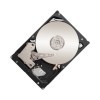- Qualcomm Launches Snapdragon 4 Gen 2 Mobile Platform
- AMD Launches Ryzen PRO 7000 Series Mobile & Desktop Platform
- Intel Launches Sleek Single-Slot Arc Pro A60 Workstation Graphics Card
- NVIDIA Announces Latest Ada Lovelace Additions: GeForce RTX 4060 Ti & RTX 4060
- Maxon Redshift With AMD Radeon GPU Rendering Support Now Available
Seagate Barracuda XT 2TB

SATA 3.0 may have been available to consumers for the past couple of months, but the number of hard drive options out there are ultra-slim… just one. That drive is Seagate’s Barracuda XT. The question we’re looking to answer here is whether or not the $100 premium for SATA 3.0 is worth it, at least on a mechanical offering.
Page 1 – Introduction
No one can deny that the current trend in storage is shifting towards larger and larger drives. The average user’s needs have increased exponentially and continue to climb. Between pictures, movies and music you will find most people prefer to store their media on their PC for ease of access and for ease of use. Now that there is a large pool of available digital merchandise ready for download, the needs for more disk storage is becoming critical.
Now that drives are coming in such large capacities, speed is becoming an issue. Western Digital has had a line of super-fast 10K RPM drives for years, and they have proven that speed is king. On the same token, newer drive controllers have been able to overcome this issue of speed, and some 7200 RPM drives are within the same performance levels as the faster models. Couple these speeds, and the fact that the tried and true five-year-old SATA 2.0 bus has yet to be fully saturated, and you get little in the way of further increases and innovation.
Finally, after all those years of such stagnation, the release of the SSD (Solid-State Drive) is thrust onto the world with a true thirst for blood. Easily able to max out the SATA 2.0 bus, these new storage devices are the shining star of the dance floor. With blinding speed and low power use to boot, these drives are set to become the new standard… well, if it were not for one very important factor: cost. At roughly $3 per gigabyte of space, they are just too expensive for most of us to make the transition. Add to that the lack of any true high density models, and we see in full the limitations of this new technology.

The answer to the million dollar question: SATA 3.0. While maintaining backwards capability with SATA 1/2 standards, SATA 3 has stepped up with massive 6Gbit/s bandwidth to enable even the most robust storage drive the freedom to run full speed. Arguably, this benefits SSD drives far more than conventional magnetic drives, but there is no doubt some room for improvement across the board. Any way you look at it, more is better and there is no doubting that this new specification will open some doors to improved performance for all.
Seagate has taken the lead by giving us the first SATA 3.0 drive, the Barracuda XT 2TB. This drive has a lot to offer not only the casual user but also the die hard download freak: SPEED. Whether you are archiving your movie collection or downloading the latest release, the need for any boost in speed is important no matter how incremental. Self-admittedly, Seagate acknowledges the initial gains are not a major jump. But it is hard to argue with ANY increases, especially in storage. If there is any part of the modern PC that has seen little in the way of innovation in the last five years, it is hard drive technology and no one can deny we are all ready for some change.
Stepping up to the fight sporting four 500GB platters spinning at 7200RPM, this drive is poised to not only fulfill all our needs for high capacity but also for speed. The follow-up punch to that sharp right hand is a solid left hook backed by 64MB of cache. No one can deny that this should alleviate all bottlenecks in the drive itself and give us the full potential available. So after digesting all the possibilities, the only question that remains is this: “Does this drive live up to the hype?” Let’s take a deeper look and put it to the test and see just how it stacks up against the competition.
Support our efforts! With ad revenue at an all-time low for written websites, we're relying more than ever on reader support to help us continue putting so much effort into this type of content. You can support us by becoming a Patron, or by using our Amazon shopping affiliate links listed through our articles. Thanks for your support!




